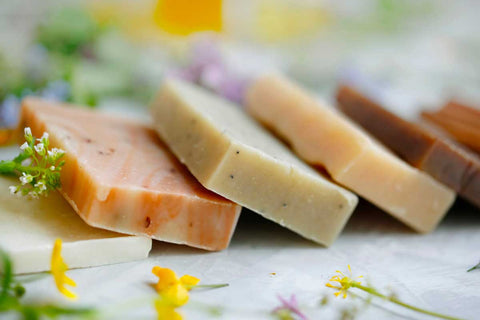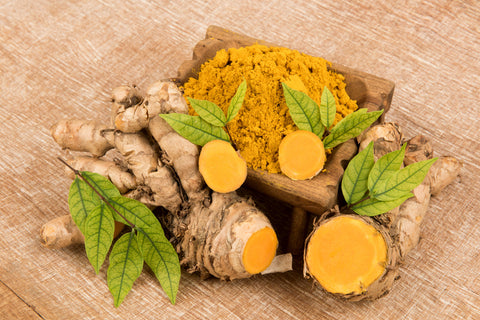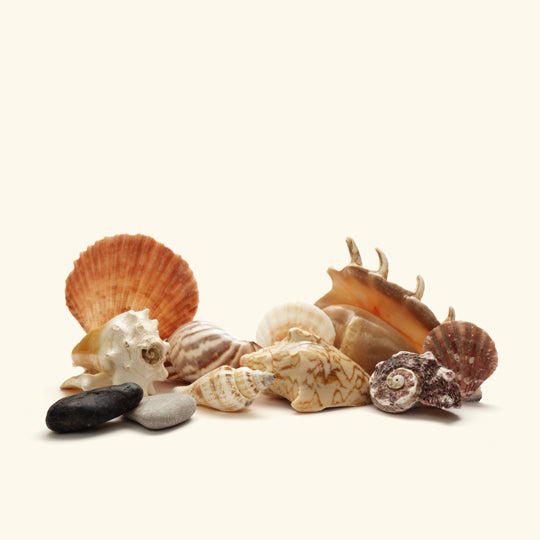Making your own soap from scratch is a joyful means of expressing yourself creatively while producing something useful and beneficial to your skin. Herbal powders are a popular ingredient in soap making.
Herbal powder in soap can enrich your soap with vitamins and minerals, significantly improving your skin. It can boost soap's potency and ability to kill germs while also protecting skin from future harm. Let's look at How To Make Herbal Soap Bars At Home. Simple DIY recipe for you to try.

5 Most Beneficial Herbs To Use In Soap
Many skin and scalp infections can be effectively treated with herbs and herbal powder. These herbal powders are high in vitamins and minerals, which help treat various skin conditions. Check out these 5 most beneficial herbs for soap making.
1.) Orange Peel Powder
Organic orange peel powder is a natural gift with vitamins A and C, citric acids, and antioxidants. This ingredient promotes healthy skin and lustrous hair. Citric acid is abundant in orange peel powder, which helps exfoliate skin and dry out pimples. Furthermore, the powder eliminates wrinkles and flaws. This herbal powder is ideal for your next soap-making project.
2.) Neem Powder

Neem herbal powder is a well-known treatment for fungal infections, redress, and itchy skin and scalp. Neem powder contains anti-bacterial and anti-inflammatory properties that help eliminate dandruff and itchy scalp while providing an even complexion. Use neem herbal powder to reduce dark spots, marks, and blemishes on the skin and scalp. This powder is simple to incorporate into soap regularly to improve skin texture and health.
3.) Aloe Vera Powder
Aloe Vera powder is now a common cosmetic ingredient in various cosmetic, skincare, and hair care products. Its vitamins and antioxidants heal the outer layer of your skin. Aloe vera powder's analgesic and anti-inflammatory properties can be used to treat skin irritations and redness. When used in soap, this powder can effectively treat skin diseases such as psoriasis and eczema.
4.) Papaya Powder
Papaya powder soap is high in Vitamin A, which gives it a radiant glow, as well as Vitamin C, known for its skin-protective properties. Papaya Seed Powder is a soap that regulates sebum production and thus acts as an oil regulator. This makes it ideal for people with oily skin. Tan removal can be accomplished with Papaya Powder soap. Its natural ability to remove tan and dark spots from your skin makes it an excellent soap-making ingredient.
5.) Wild Turmeric Powder

For centuries, we Indians have used haldi, or wild turmeric powder, to make our skin glow. It has anti-inflammatory, antiseptic, and anti-bacterial properties. Furthermore, the yellow pigment in turmeric powder brightens the skin. Natural bleaching properties of wild turmeric powder help to lighten pigmentation and discoloration. The presence of antioxidants also aids in the removal of oxidation in the skin, which causes the skin to darken. It is an excellent soap-making ingredient.
How To Make Herbal Soap Bars At Home?
People use herbal powder in masks and face packs, which are beneficial, but soaps are superior because they can be used more frequently and easily. Check out this easy recipe for homemade herbal soap bars.
Ingredients
- Glycerin Soap Base - 500 Grams
- Sweet Orange Essential Oil - 5 Drops
- Peppermint Essential Oil - 2 Drops
- Orange Peel Powder - 2-3 Teaspoons
- Oceanic Mist Fragrance Oil - 2-3 Drops
- Dried Hibiscus Flower - 5 Teaspoons
- Matte Orange Soap Color - 2 Teaspoons
Recipe Of How To Make Herbal Soap Bars At Home

Step 1: Slice or cut the glycerin soap block into pieces. This soap will be created using a simple glycerin soap foundation. Start with as much glycerin as is required to yield the number of soap bars you want. Using a blunt knife, glycerin should be cut into 1 in (2.5 centimeters) pieces. Alternatively, you could slice the stone using a cheese grater.
Step 2: Put the glycerin soap in the microwave to melt it. Put the glycerin that has been chopped up into a microwave-safe receptacle with a pour spout. For about 30 seconds, microwave this on 50% power. Using a disposable spoon, gently stir the glycerin as you reheat it until it becomes liquid.
Step 3: A few drops of essential oil should be stirred to give a fragrance. For every 500 grams of glycerin, mix 3 to 8 droplets of essential oil. The oils and glycerin should be slowly and softly stirred together. There will be air pockets, but try not to introduce too many into the liquid glycerin. Select scents that go well with the kinds of herbs you intend to use.
Step 4: To incorporate desiccated herbs into the liquid glycerin, grind them or use herbal powder.
Step 5: Arrange the whole plants in the bottom of the soap molds to make the dried herbs appear on top. First, fill the bottom of your soap molds with whole dried herbs, floral petals, or fruit peels to achieve this. Before adding the liquid glycerin on top, arrange them neatly. Avoid incorporating new plant components into your detergent. Fresh fruits, flowers, plants, and foliage can harbor bacteria and mold.
Step 6: Fill soap molds with the soap concoction. You are prepared to pour the liquid soap mixture into the molds once you have combined the dried herbs with your liquid glycerin or placed larger portions in the bottom of your soap molds. For each soap bar you want to create, carefully pour the liquid into the mold. Don't overfill each container; just fill each one to the top.
Step 7: For one or two hours, let the soap chill at room temperature. Allow the soap to settle to room temperature and solidify. Wait until the soap has completely solidified before handling it. To prevent your soap bars from setting unevenly, place the soap molds on a flat surface.
Step 8: Put the soap in the freezer for 30 minutes to cool it more rapidly.
Step 9: Take the soap strips out of the soap molds. By flipping the cast over and gently pushing the bars out, you can remove the bars from silicone molds. Each bar of soap made with metal molds can be raised out of the cast by loosening the side with a butter knife.
Conclusion
In conclusion, herbal powders are fantastic for enhancing the benefits of your soap, which not only cleans but also nourishes and beautifies your skin. Learn how to make herbal soap bars at home using the recipe above. VadaOils offers the highest quality soap-making ingredients and supplies. Visit VedaOils.com to receive a discount on your first purchase.
FAQs
Some frequently asked questions for our amazing readers. To give you more clearance as we care for your queries.
Q1: How long does herbal soap last?
Ans: Most commercially available soaps have two to three years of shelf life. Because essential oils and fragrances can go rancid or moldy, natural or handmade soaps may expire sooner, within a year.
Q2: What is the benefit of herbal soap?
Ans: Organic soaps contain therapeutic powers from natural components such as essential oils, herbal extracts, and spices. They function as cleansers and can help treat skin diseases such as acne, eczema, and even sunburn.
Q3: What is herbal soap made from?
Ans: Herbal Soaps are made using natural herbs, vegetable oils, essential oils, and natural soap bases.
Q4: Is herbal soap good for the face?
Ans: Natural anti-bacterial ingredients such as neem, turmeric, sandalwood, peppermint, and tea tree oil are used in Ayurveda soaps. As a result, ayurvedic soaps aid in the prevention of acne and pimples by keeping the skin germ-free.













 Sign in
Sign in Register now
Register now My Reward Points
My Reward Points









